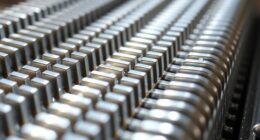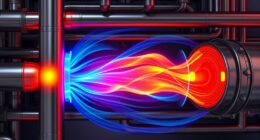Are you fed up with high energy bills and inefficient heating systems? You’re in luck! We have put together a list of 15 efficient heat pump techniques that will help makeover your eco-friendly building.
From proper insulation to optimal thermostat settings, our techniques will save you money and reduce your carbon footprint.
With regular maintenance and the use of energy-efficient heat pump models, you’ll be on your way to achieving mastery in creating a sustainable and comfortable living space.
Let’s dive in!
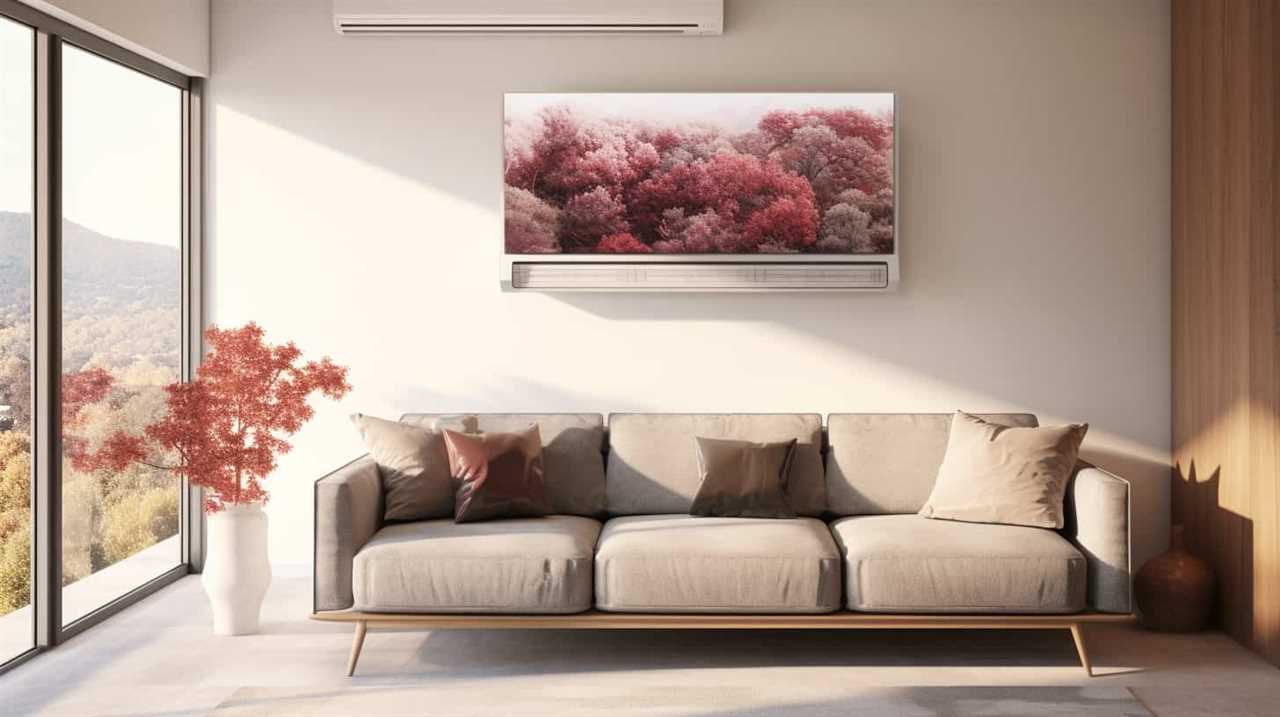
Key Takeaways
- Accurate sizing and capacity calculation is crucial for heat pump efficiency and performance.
- Proper insulation and air sealing techniques are important for maximizing energy efficiency.
- Thermostat settings and control should be optimized for energy savings and comfort.
- Regular maintenance and cleaning of heat pumps is essential for optimal performance and longevity.
Heat Pump Sizing and Capacity
How do we determine the appropriate size and capacity of a heat pump for eco-friendly buildings?
When it comes to heat pump efficiency and performance, getting the sizing and capacity right is crucial. To ensure optimal energy usage and cost-effectiveness, it’s essential to calculate the heating and cooling loads accurately.
This involves considering factors such as the building’s size, insulation levels, climate conditions, and desired indoor comfort. By accurately determining the required heating and cooling capacities, we can avoid oversized or undersized heat pumps, which can lead to energy wastage or ineffective heating and cooling.
Achieving the right balance between heat pump size and building requirements is essential to maximize performance and efficiency. With the appropriate sizing and capacity, the heat pump can operate at its optimal levels, providing efficient heating and cooling while minimizing energy consumption.

Now, let’s move on to the next section, which discusses the importance of proper insulation for enhanced efficiency.
Proper Insulation for Enhanced Efficiency
When it comes to proper insulation for enhanced efficiency, there are several key points to consider.
First, the choice of insulation materials and types is crucial in determining the overall effectiveness of the insulation.
Additionally, the importance of air sealing can’t be overstated, as any gaps or leaks can significantly reduce the insulation’s performance.

Lastly, proper insulation installation techniques are essential to ensure that the insulation is properly installed and functioning at its optimal level.
Insulation Materials and Types
We can enhance the efficiency of our buildings by using proper insulation materials and types. Insulation plays a crucial role in reducing heat transfer and maintaining a comfortable indoor environment. There are various insulation materials available, each with its own advantages and disadvantages. To help you make an informed decision, here is a comparison of some commonly used insulation materials:
| Insulation Material | R-Value (per inch) | Pros | Cons |
|---|---|---|---|
| Fiberglass | 3.14-3.85 | Affordable, easy to install | Can irritate skin and lungs |
| Cellulose | 3.13-3.70 | Made from recycled materials | Prone to moisture damage |
| Spray Foam | 6.00-6.50 | Excellent air sealing properties | Expensive, requires professional installation |
| Mineral Wool | 3.00-3.30 | Fire-resistant, provides sound insulation | Heavy and can be difficult to handle |
| Polyurethane | 5.60-6.00 | High R-value, effective in small spaces | Pricey, potential off-gassing |
When installing insulation, it is important to follow these tips to maximize its effectiveness: ensure proper air sealing, pay attention to gaps and cracks, and consider the climate and building design. By choosing the right insulation materials and following proper installation techniques, we can significantly improve the energy efficiency of our buildings.
Importance of Air Sealing
Proper air sealing is crucial for enhancing the efficiency of our buildings. It involves sealing gaps and cracks to prevent air leakage. By effectively sealing these openings, we can significantly reduce the amount of air that escapes from our buildings, resulting in improved energy efficiency.
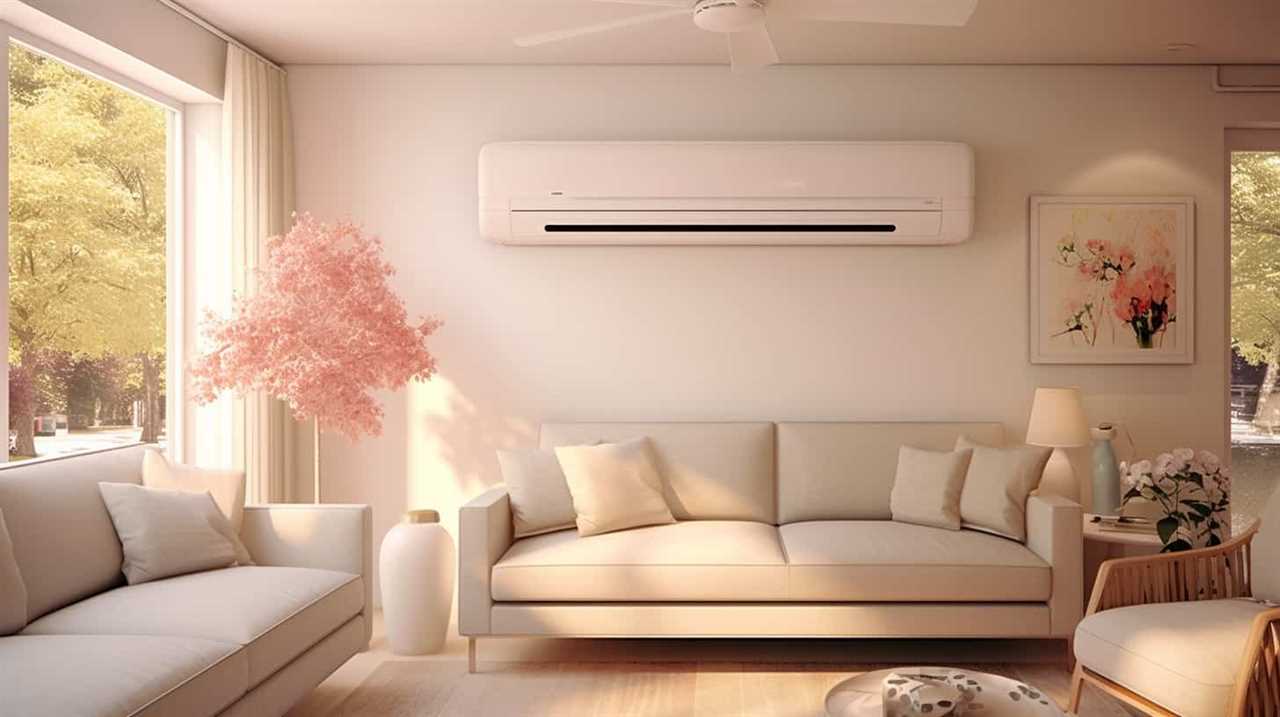
Here’s why air sealing is so important:
-
Reduces air leakage: Sealing gaps and cracks prevents air from escaping, which means that the conditioned air produced by our heating and cooling systems stays inside the building. This reduces the need for constant heating or cooling.
-
Improves energy efficiency: When air leakage is minimized, the energy required to maintain a comfortable indoor temperature decreases. This leads to lower energy consumption and reduced utility bills.
-
Enhances indoor comfort: Proper air sealing helps maintain a consistent temperature throughout the building. It eliminates drafts and cold spots, ensuring a more comfortable living or working environment.

Insulation Installation Techniques
To achieve enhanced efficiency, we must ensure the proper installation of insulation using effective techniques.
Insulation is a critical component of eco-friendly buildings as it helps to reduce energy consumption and maintain a comfortable indoor environment.
When it comes to insulation installation techniques, there are several factors to consider.
First, it’s important to choose the right type of insulation material, such as fiberglass, cellulose, or spray foam, based on the specific needs of the building.

Proper air sealing is also crucial to prevent air leakage and maintain the effectiveness of the insulation.
Additionally, installing insulation in the right areas, such as walls, floors, and attics, can further enhance energy efficiency.
Lastly, integrating energy-saving thermostat options can help optimize the performance of the insulation system and reduce energy wastage.
Optimal Thermostat Settings for Heat Pump Systems
When it comes to optimizing thermostat settings for heat pump systems, there are a few key points to consider.

Firstly, maintaining ideal temperature ranges is crucial for energy efficiency. By setting the thermostat within recommended ranges, we can ensure that the heat pump operates optimally without consuming excessive energy.
Secondly, using energy-saving thermostat options can further enhance efficiency by allowing for precise temperature control and scheduling.
Ideal Temperature Ranges
As we consider the ideal temperature ranges for heat pump systems, it’s important to understand the optimal thermostat settings that can maximize energy efficiency and comfort in eco-friendly buildings. Setting the temperature too high or too low can lead to unnecessary energy consumption and discomfort.
Here are some key points to keep in mind when setting the thermostat for a heat pump system:

-
Maintain a moderate temperature: Setting the thermostat between 68°F and 72°F (20°C and 22°C) is generally recommended for optimal energy efficiency and comfort.
-
Use setback temperatures: When the building is unoccupied or during sleeping hours, it’s advisable to lower the thermostat by a few degrees to save energy without sacrificing comfort.
-
Avoid extreme temperature changes: Rapid fluctuations in temperature can strain the heat pump system and reduce its efficiency. Gradual adjustments are preferred to maintain a stable and energy-efficient environment.
Energy-Saving Thermostat Options
Our recommended thermostat settings for heat pump systems depend on maintaining a moderate temperature range and utilizing setback temperatures to maximize energy efficiency and comfort.

Energy-saving thermostat options are crucial in achieving these goals. One such option is programmable thermostats, which allow users to set different temperatures throughout the day based on their schedule. By programming the thermostat to lower the temperature during periods of absence or at night when lower temperatures are more tolerable, energy consumption can be significantly reduced.
Another option is the use of smart thermostats, which can learn the occupants’ preferences and adjust the temperature accordingly. These thermostats can also be controlled remotely, allowing users to make adjustments even when they aren’t at home.
Additionally, heat pump water heating systems can help conserve energy by using the excess heat generated by the heat pump to warm up water, reducing the need for separate water heating systems.
These energy-saving thermostat options, coupled with heat pump water heating, can greatly contribute to the overall energy efficiency of a building.

Seasonal Thermostat Adjustments
We can achieve optimal thermostat settings for heat pump systems by making seasonal adjustments based on changing weather conditions. By fine-tuning our thermostat programming, we can effectively manage seasonal energy consumption and ensure maximum efficiency for our heat pump systems.
Here are three key considerations for seasonal thermostat adjustments:
-
Temperature differentials: Adjusting the temperature differentials on the thermostat can help optimize the heat pump system’s performance. This means setting a narrower temperature range between heating and cooling modes to avoid excessive energy usage.
-
Setback temperatures: Implementing setback temperatures during periods of low occupancy or at night can significantly reduce energy consumption. By lowering the set temperature, the heat pump system will work less to maintain the desired comfort level.
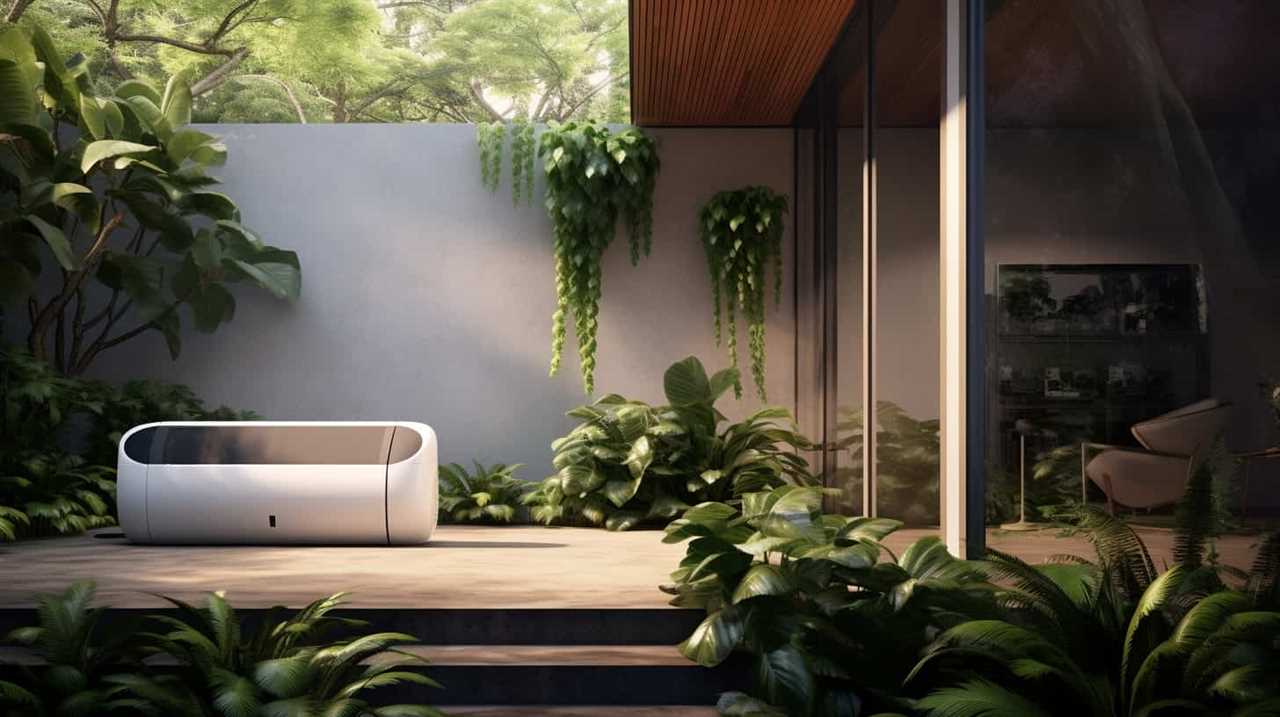
-
Weather forecasting: Utilizing weather forecasting data can help anticipate temperature changes and adjust thermostat settings accordingly. By proactively adapting to upcoming weather conditions, we can optimize the heat pump’s operation for maximum efficiency.
Regular Maintenance and Cleaning
To ensure optimal performance and longevity, it’s essential to regularly maintain and clean heat pumps in eco-friendly buildings. Regular maintenance helps prevent issues and ensures that the heat pump operates efficiently.
Key maintenance tasks include inspecting and cleaning the filters, coils, and fans, as well as checking for any leaks or damage. Cleaning techniques involve removing dirt, debris, and any buildup that can hinder the heat exchange process. This can be done by using a soft brush or vacuum to clean the filters and coils, and wiping down the exterior surfaces.
It’s also important to schedule professional maintenance at least once a year to address any complex issues and ensure that all components are functioning properly.

Energy-Efficient Heat Pump Models
For our discussion on energy-efficient heat pump models, we’ll now explore the latest advancements in technology and their impact on eco-friendly buildings.
Energy efficient heat pump technology has made significant strides in recent years, offering improved performance and reduced energy consumption. Here are some key developments in this field:
-
Variable speed compressors: These advanced compressors adjust their speed based on the heating or cooling needs, ensuring optimal efficiency and comfort.
-
Enhanced insulation: Heat pumps now come with better insulation materials, reducing heat loss and improving overall energy efficiency.

-
Smart controls and automation: With the integration of smart technology, heat pumps can be controlled remotely and programmed to operate at specific times, optimizing energy usage.
By incorporating these innovations into heat pump design, eco-friendly buildings can enjoy increased energy savings and reduced environmental impact.
Regular heat pump maintenance is essential to ensure these models continue to operate at peak efficiency, prolonging their lifespan and maximizing their eco-friendly benefits.
Geothermal Heat Pump Systems
One of the most efficient and environmentally friendly heat pump systems is the geothermal heat pump. Geothermal heat pumps utilize the constant temperature of the earth to provide heating and cooling for buildings.
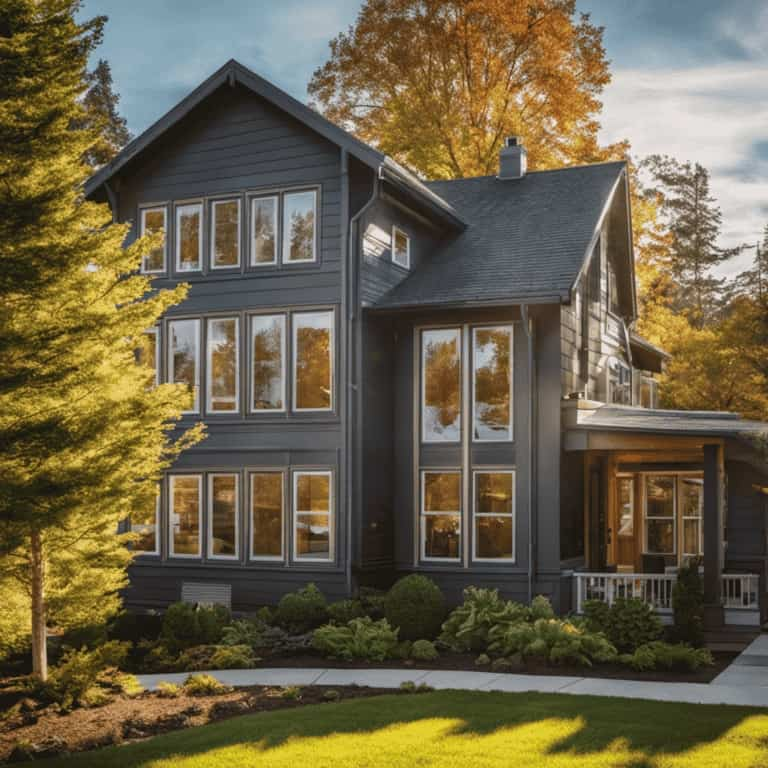
The installation of a geothermal heat pump involves burying a series of pipes, called a ground loop, underground. These pipes circulate a mixture of water and antifreeze, which absorbs heat from the ground during the winter and dissipates heat into the ground during the summer.
The benefits of geothermal heat pumps are numerous. They offer high energy efficiency, reducing energy consumption and utility bills. They also have a long lifespan and require minimal maintenance. Additionally, geothermal heat pumps are eco-friendly, as they produce fewer greenhouse gas emissions compared to traditional heating and cooling systems.
Smart Home Integration for Heat Pump Control
Smart home integration offers several convenient features for controlling and monitoring heat pumps. These features include voice-activated control and mobile app integration.
With voice-activated control, users can easily adjust their heat pump settings by simply giving commands to their smart devices. This allows for quick and hands-free temperature adjustments, as well as switching between heating and cooling modes.

Mobile app integration takes convenience a step further by allowing users to control their heat pump settings remotely. This means that users can adjust the temperature and other settings from anywhere, using their smartphone or tablet. This feature is especially useful for optimizing energy consumption based on individual schedules and preferences.
Voice-Activated Heat Pump Control
As we explore voice-activated heat pump control, we can see the seamless integration it offers for controlling heat pumps in eco-friendly buildings.
With voice-activated energy management, users can effortlessly control the temperature and settings of their heat pumps using voice commands.
Voice-activated home automation takes convenience to a new level, allowing users to adjust their heat pumps without needing to physically interact with a thermostat or control panel.

This technology utilizes advanced voice recognition algorithms, enabling precise and accurate control of heat pumps.
By simply speaking commands such as ‘increase temperature’ or ‘set fan speed to low,’ users can easily optimize their heat pump’s performance for maximum energy efficiency.
Voice-activated heat pump control provides a sophisticated and user-friendly solution for managing the heating and cooling systems in eco-friendly buildings.
Mobile App Integration
We can control our heat pumps efficiently through mobile app integration, which allows us to adjust settings and monitor energy usage conveniently from our smartphones. With mobile app features specifically designed for heat pump control, we have the ability to remotely manage temperature settings, fan speed, and operating modes.

The user interface design of these apps is intuitive and user-friendly, providing a seamless experience for homeowners. Through the app, we can also view real-time energy consumption data, enabling us to track and optimize our energy usage.
Additionally, the mobile app integration allows for advanced scheduling capabilities, allowing us to set specific temperature profiles for different times of the day. This level of control and convenience maximizes the efficiency of our heat pumps, resulting in reduced energy consumption and lower utility bills.
Ductwork Design and Sealing
Ensuring proper ductwork design and sealing is essential for maximizing the efficiency of our heat pump system. To achieve optimal performance, we must pay careful attention to ductwork installation and maintenance. Here are three key considerations:
-
Duct sizing: Properly sized ducts ensure that air flows smoothly and efficiently throughout the building. Undersized or oversized ducts can lead to pressure imbalances, reduced airflow, and energy waste.

-
Duct insulation: Insulating the ductwork minimizes heat gain or loss, improving the overall efficiency of the system. Insulation materials with high R-values, such as fiberglass or foam insulation, should be used to reduce thermal losses.
-
Duct sealing: Sealing gaps and leaks in the ductwork prevents air leakage, improving energy efficiency and indoor air quality. Proper sealing techniques, such as using mastic or metal-backed tape, should be employed to ensure a tight seal.
Heat Pump Placement and Ventilation
To maximize the efficiency of our heat pump system, we must strategically place the heat pump and ensure proper ventilation. Heat pump placement plays a crucial role in its overall performance and noise reduction.
The heat pump should be situated in a well-ventilated area, away from obstructions that could impede airflow. Adequate space around the unit allows for easy access during maintenance and servicing. Additionally, the heat pump should be installed on a solid, level surface to minimize vibrations and reduce noise transmission.
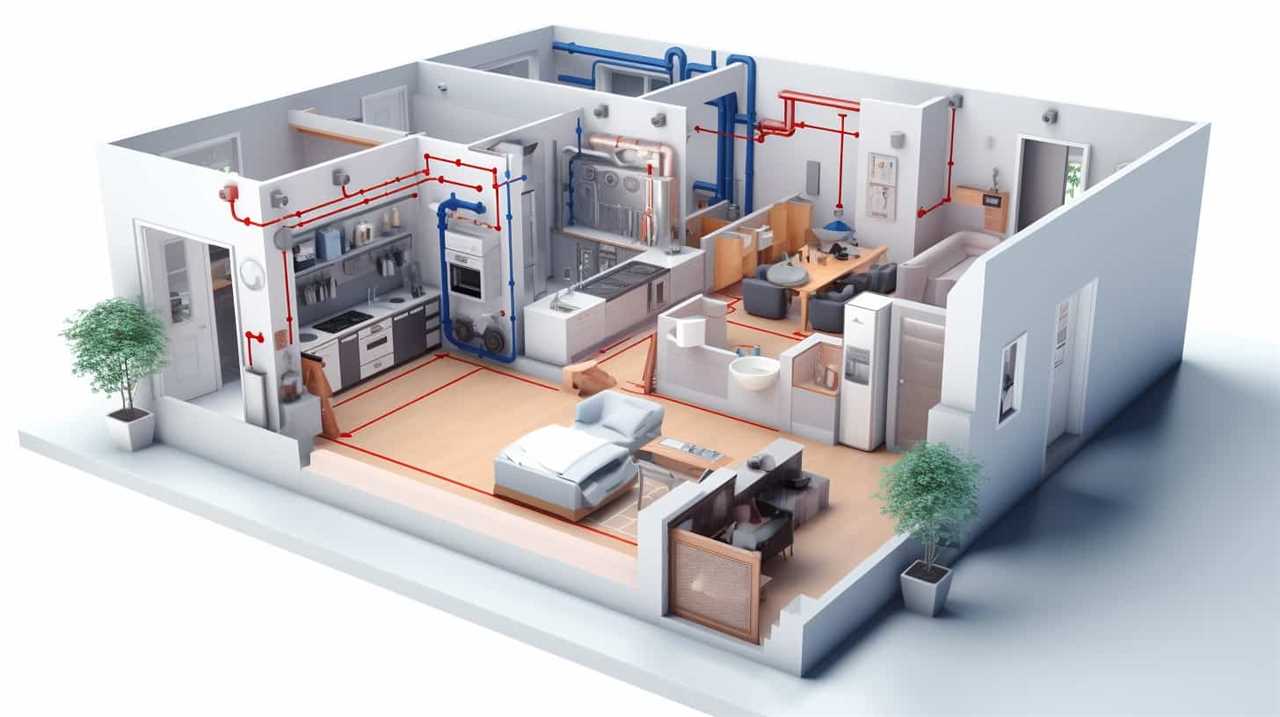
Proper ventilation is essential to ensure efficient heat exchange and prevent overheating of the unit. Regular maintenance of the heat pump is also crucial to optimize its performance. This includes cleaning or replacing air filters, inspecting and lubricating fan motors, and checking refrigerant levels.
Following these heat pump maintenance tips won’t only enhance its longevity but also maintain its energy-efficient operation.
Variable-Speed Compressors for Improved Efficiency
Variable-speed compressors offer numerous advantages in improving the efficiency of heat pumps.
Firstly, they enable enhanced energy savings by adjusting the speed of the compressor to match the heating or cooling demands of the building. This ensures that only the necessary amount of energy is used, resulting in reduced energy consumption and associated costs.

Additionally, variable-speed compressors allow for optimal temperature control by providing more precise regulation of the heat pump’s output, leading to improved comfort and reduced fluctuations in indoor temperature.
Lastly, by operating more efficiently and effectively, heat pumps with variable-speed compressors contribute to a reduced carbon footprint, making them a valuable asset for eco-friendly buildings.
Enhanced Energy Savings
By utilizing variable-speed compressors, we can achieve improved efficiency and enhance energy savings in eco-friendly buildings. These compressors have the ability to adjust their speed based on the demand for heating or cooling, ensuring that the system operates at the optimal level at all times. This results in reduced energy consumption and lower utility bills.
To further enhance energy savings, it’s important to implement proper heat pump maintenance tips. Regularly cleaning or replacing air filters, checking and adjusting refrigerant levels, and scheduling professional inspections can all contribute to the efficiency and longevity of the heat pump system.
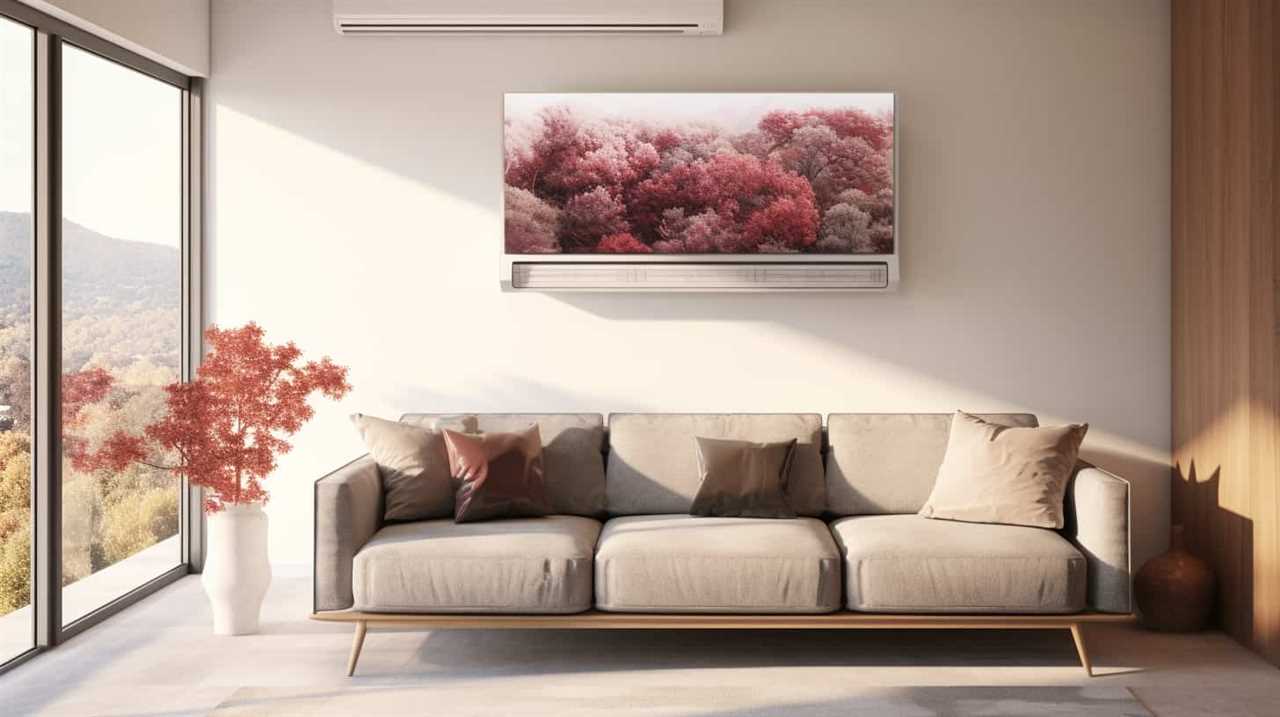
Additionally, energy efficient building design plays a crucial role in maximizing energy savings. Implementing proper insulation, utilizing energy-efficient windows and doors, and incorporating passive cooling and heating strategies can greatly reduce the energy demand of the building, allowing the heat pump system to operate at its highest efficiency.
Optimal Temperature Control
Our goal is to achieve optimal temperature control in eco-friendly buildings through the use of variable-speed compressors and improved efficiency. By employing variable-speed compressors, we can regulate the temperature more precisely, resulting in optimal temperature regulation and energy efficient cooling. These compressors are designed to adjust their speed according to the cooling demands of the building, ensuring that the system operates at the most efficient level at all times. This not only reduces energy consumption but also enhances overall system performance.
To emphasize the benefits of variable-speed compressors, consider the following table:
| Traditional Compressors | Variable-Speed Compressors |
|---|---|
| Fixed-speed operation | Adjusts speed as needed |
| Less precise control | Optimal temperature regulation |
| Higher energy consumption | Improved efficiency |
| Limited system performance | Enhanced performance |
Reduced Carbon Footprint
To reduce our carbon footprint, we can utilize variable-speed compressors and improve efficiency in eco-friendly buildings. By incorporating these technologies, we can achieve a more sustainable building design and make use of renewable energy sources.

Here are three key benefits of variable-speed compressors in reducing carbon footprint:
-
Enhanced energy efficiency: Variable-speed compressors adjust their speed to match the building’s heating and cooling demands, resulting in reduced energy consumption and lower greenhouse gas emissions.
-
Optimal performance: These compressors can deliver precise temperature control, ensuring that the building operates at its most efficient level while minimizing energy waste.
-
Improved comfort and indoor air quality: The variable-speed operation allows for a more consistent and even distribution of conditioned air, creating a comfortable environment for occupants.

Heat Pump Water Heating
Heat pump water heating is an energy-efficient method that utilizes a refrigeration cycle to transfer heat from the surrounding air to provide hot water for our buildings. It offers significant advantages over traditional water heating systems, such as lower operating costs and reduced carbon emissions. To better understand the efficiency of heat pump water heating, let’s take a look at the following table:
| Key Points | Benefits | Considerations |
|---|---|---|
| Energy Efficiency | – High Coefficient of Performance (COP) | – Reduced performance in colder climates |
| Environmental Impact | – Lower greenhouse gas emissions | – Requires electricity for operation |
| Cost Savings | – Lower operating costs over time | – Higher initial installation cost |
To ensure optimal performance and longevity of heat pump water heaters, regular maintenance is essential. This includes checking and cleaning filters, inspecting refrigerant levels, and ensuring proper airflow. In case of any issues, troubleshooting techniques such as checking for error codes and consulting the manufacturer’s guidelines can help identify and resolve problems promptly. By implementing proper maintenance and troubleshooting practices, we can maximize the efficiency and lifespan of heat pump water heating systems in our eco-friendly buildings.
Heat Pump Backup Systems
For reliable heating during periods of high demand or system failure, we can utilize heat pump backup systems through the use of auxiliary heating elements or a dual fuel system. These backup systems ensure uninterrupted heating and provide peace of mind for building owners and occupants.
Here are three key considerations when implementing heat pump backup systems:

-
Heat Pump Maintenance: Regular maintenance of the heat pump is crucial to ensure its optimal performance and longevity. This includes cleaning or replacing filters, checking refrigerant levels, and inspecting electrical connections.
-
Backup Power: In the event of a power outage, having a backup power source is essential to keep the heat pump running. This can be achieved through the use of a backup generator or a battery backup system.
-
Dual Fuel System: A dual fuel system combines a heat pump with a secondary heating source, such as a gas or oil furnace. This allows the system to switch to the secondary heating source when the heat pump is unable to meet the heating demands.
By addressing these considerations, heat pump backup systems can provide reliable and efficient heating, ensuring comfort even during challenging conditions.
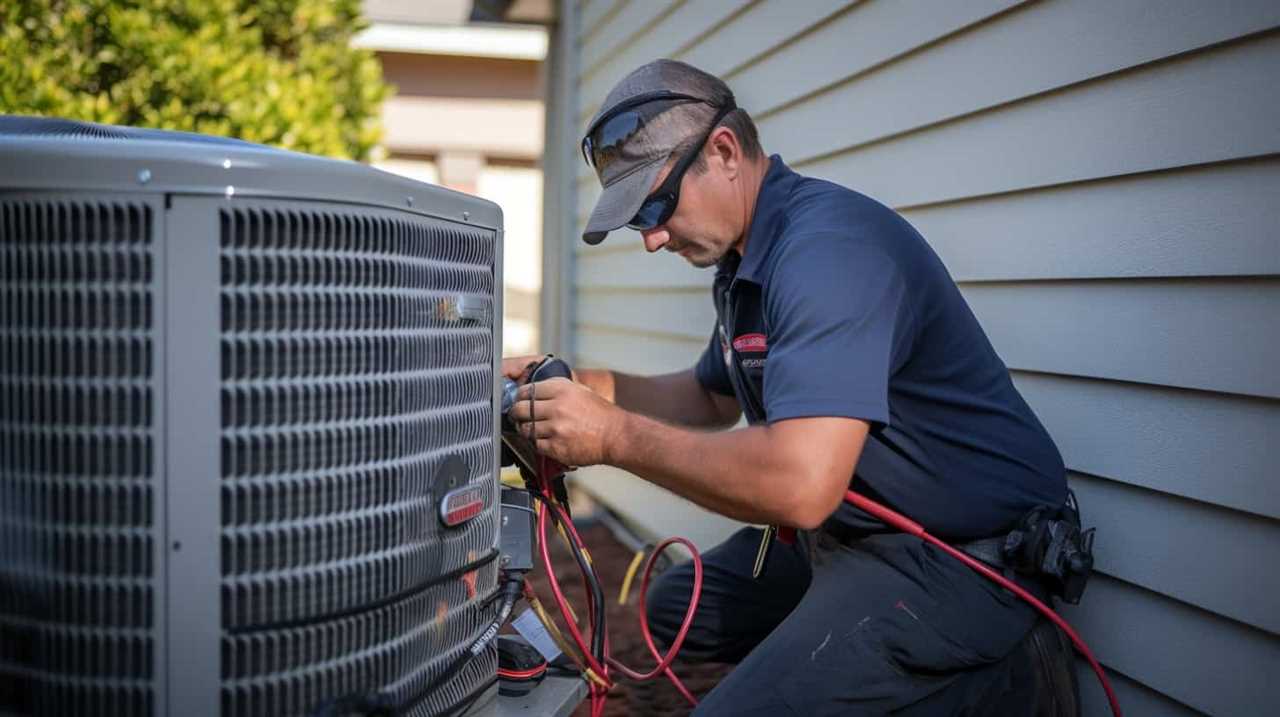
Now, let’s explore the next topic of utilizing heat recovery ventilation.
Utilizing Heat Recovery Ventilation
With the aim of improving indoor air quality and energy efficiency, we can enhance the eco-friendliness of buildings by utilizing heat recovery ventilation. Heat recovery ventilation is a technique that allows for the exchange of heat between the incoming and outgoing air streams in a building. This process helps to reduce energy consumption by transferring heat from the outgoing air to the incoming air, thus minimizing the need for additional heating or cooling. By implementing heat recovery ventilation systems, buildings can achieve significant energy savings while maintaining a comfortable indoor environment. These systems often utilize heat exchangers to facilitate the transfer of heat, ensuring that energy is efficiently recovered and utilized. Overall, incorporating heat recovery techniques into ventilation systems is an effective way to achieve energy-efficient buildings and contribute to a sustainable future.
| Heat Recovery Ventilation | Benefits |
|---|---|
| Improved indoor air quality | Reduced energy consumption |
| Enhanced energy efficiency | Sustainable buildings |
| Comfortable indoor environment | Cost savings |
| Reduced need for additional heating or cooling |
Heat Pump Zoning and Individual Room Control
By implementing heat pump zoning and individual room control, we can optimize the efficiency of our HVAC systems in eco-friendly buildings. This technique allows for customized temperature settings in different rooms, ensuring comfort while minimizing energy waste.
Here are three key benefits of heat pump zoning and individual room control:

-
Energy savings: With zoning control, we can direct heated or cooled air to specific areas only when needed, reducing energy consumption and lowering utility costs.
-
Enhanced comfort: Individual room temperature control allows occupants to adjust the temperature according to their preferences, ensuring optimal comfort throughout the building.
-
Reduced environmental impact: By efficiently regulating temperature in each room, heat pump zoning minimizes energy waste and greenhouse gas emissions, contributing to a more sustainable environment.
Implementing heat pump zoning and individual room control is a practical and eco-friendly solution for optimizing HVAC systems in modern buildings.
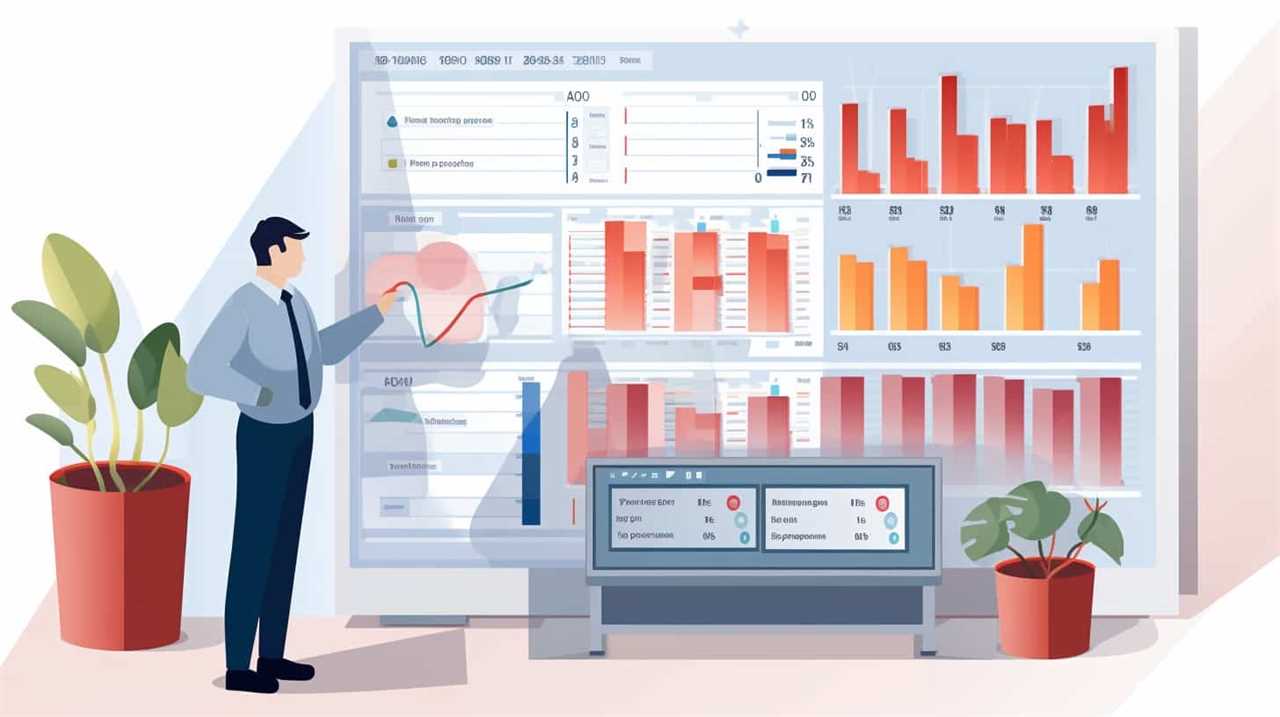
Heat Pump Incentives and Rebates
To maximize our savings and encourage the adoption of heat pump technology, there are various incentives and rebates available for eco-friendly buildings. These incentives aim to promote the installation and use of heat pumps, which are known for their energy efficiency and environmentally friendly operation.
One common incentive is the provision of financial rebates or tax credits to offset the initial cost of purchasing and installing a heat pump system. In addition, some utility companies offer special rates or incentives for customers who choose to install and use heat pumps. These incentives and rebates can significantly reduce the overall cost of heat pump installation and make it a more financially viable option for eco-friendly buildings.
It’s important to note that in order to qualify for these incentives and rebates, regular heat pump maintenance and upkeep is essential to ensure optimal performance and efficiency.
Frequently Asked Questions
How Much Does It Cost to Install a Heat Pump in an Eco-Friendly Building?
The cost of installing a heat pump in an eco-friendly building varies depending on factors such as size, type, and efficiency. We can provide a cost comparison and guide you through the installation process.

Can a Heat Pump Be Installed in an Existing Building or Is It Only Suitable for New Constructions?
Heat pump retrofit options are available for existing buildings, not just new constructions. By installing a heat pump, energy savings can be achieved, making it an efficient and eco-friendly choice for heating and cooling.
Are There Any Government Programs or Incentives Available for Installing an Energy-Efficient Heat Pump?
Yes, there are government programs and incentives available for installing energy-efficient heat pumps. We recently took advantage of a rebate program that helped offset the cost of our new heat pump installation.
Can a Heat Pump Be Used for Both Heating and Cooling Purposes?
Yes, a heat pump can be used for both heating and cooling purposes. Heat pump efficiency is achieved through the transfer of heat, providing advantages such as energy savings, consistent temperature control, and reduced environmental impact.
How Long Does a Heat Pump Typically Last Before Needing to Be Replaced?
Heat pump lifespan varies depending on factors such as usage, maintenance, and quality. Regular maintenance is essential to maximize longevity. With proper care, a heat pump can typically last 15-20 years before needing replacement.
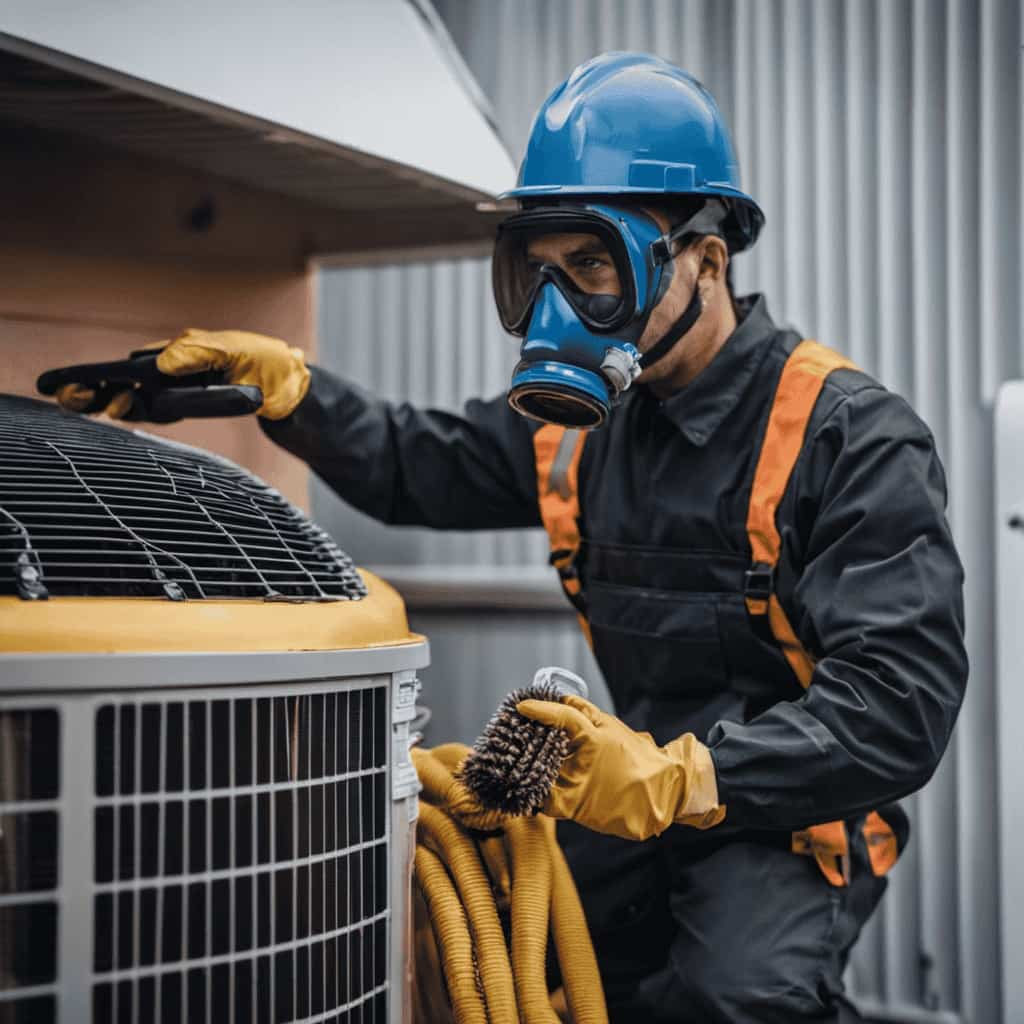
Conclusion
In conclusion, heat pump technology offers a multitude of efficient techniques for creating eco-friendly buildings.
By properly sizing and maintaining heat pumps, optimizing thermostat settings, and utilizing energy-efficient models, we can enhance their performance and minimize energy consumption.
Additionally, incorporating heat recovery ventilation, zoning, and individual room control can further improve efficiency.
Taking advantage of incentives and rebates can also make these eco-friendly solutions more accessible.

Together, these techniques contribute to a more sustainable and comfortable living environment.






